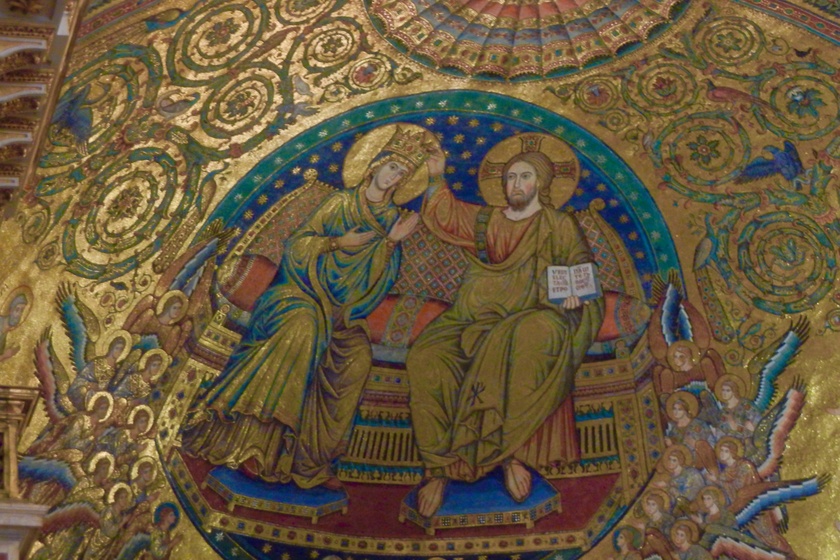Hi folks - today, the second Friday in Lent, is the feast of the Holy Lance and Nails, which is to say another way to remember the passion of Christ.
Unrelated to that, I promised another insight from St. John Henry Newman, so here it is. In the book, The Mystical Rose, JHN remarks in passing that Mary is "a Queen upon her Son's right hand." And it made me think, OK, so this is why, when Mrs. Zebedee comes to Jesus and asks him if her sons can sit at Jesus' right and left in the Kingdom, Jesus says no. To be fair, her sons were two-thirds of Jesus' inner circle of three closest disciples: Peter, James, and John. And the image of sitting at the right and left is a normal way of thinking of the place of honor at a table. But it occurred to me that Jesus could not give those spots to James and John, because they were already reserved for Mary, and perhaps for Peter. The Queen Mother and the Steward of the Kingdom.
Or another way to look at it would be that, since Jesus sits at the right hand of the Father, then the Father is at Jesus' left, and Mary is at his right. At the risk of taking this all too literally, the seating arrangement at the "head table" of the heavenly banquet would then be (from left to right, facing them): Mary, Jesus, the Father, and presumably, the Holy Spirit (the Church fathers call the Son and Spirit the two "hands" of the Father, so I'm going to go ahead an assume that the Spirit is at the Father's left) - and again, all this is too literal, of course, but it's interesting to think about.
In the medieval mosaic in the apse of Santa Maria Maggiore in Rome, Jesus crowns Mary Queen of Heaven, and she actually shares his throne, sitting on his right. So if it is true that the Son sits at the Father's right hand, it is equally true that Mary sits at her Son's right hand.

I mentioned in The Journey that I wrote a song based on Isaiah 2, which is one of my favorite OT passages:
In days to come, the mountain of the Lord’s house
shall be established as the highest mountain, and raised above the hills.
All nations shall stream toward it. Many peoples shall come and say:
“Come, let us go up to the Lord’s mountain, to the house of the God of Jacob, That he may instruct us in his ways, and we may walk in his paths.” For from Zion shall go forth instruction, and the word of the Lord from Jerusalem.
He shall judge between the nations, and set terms for many peoples.
They shall beat their swords into plowshares, and their spears into pruning hooks; One nation shall not raise the sword against another, nor shall they train for war again. House of Jacob, come, let us walk in the light of the Lord!
I hope you like the song!
in this book - I contributed a chapter called Rigorism in the Early Church: The First "Fundamentalists"
https://www.amazon.com/dp/B0FTRS5QMM
The title is Faith in Crisis: Critical Dialogues in Catholic Traditionalism, Church Authority, and Reform - it's based on the idea that finding the truth (and indeed the development of correct doctrine) is a navigation of the middle way, and avoiding the extremes - and it covers pretty much the whole history of the Church.












